Scientists teach us that food can make us healthy and strong or it can make us very sick and weak. In 450 BC, Herodotus said the following: “All diseases to which man is subject proceed from food.” This is also a widely held opinion among many scientists today.
Unfortunately, even if we wanted to, feeding our pets an optimum level of nutrition is difficult given the pet foods and information we have today. As owners, we need to question the message provided by our commercial manufacturers and require much more of their offerings. Nutrition is the foundation of life. We owe it to our pets to do everything possible to get it right.
The good news — out of all of the forces of life that determine your pet’s health and well-being, Nutrition is the easiest to control once we understand their needs and how best to provide those needs.
A balanced diet contains optimal proportions of all essential ingredients, which can ultimately be utilized with maximal efficiency for any specified purpose. Optimal amounts of each nutrient are best provided as a range rather than a single value because of the variation between animal’s size, weight, activity level and health issues. In addition, a broad range of hair coats, body types, temperaments and environmental settings all complicate the estimation of a pet’s nutritional requirement.
Nutritional requirements are broad in undemanding situations like adult maintenance of a healthy pet in comfortable surroundings. The range narrows under more demanding situations, such as growth, breeding, hard work, disease and stress.
Increasing your pet’s daily nutritional intake from minimal to optimum will have an immediate effect. What does this actually mean in terms of what you will see and how fast you will see it?
Optimum nutrition begins by sending nutrients to where they are needed most. Internally your pet will begin a slow and steady transformation — this process may take some time, but remember; every day your pet is gaining something new and is making progress towards becoming the best it can possibly be.

- Bones, ligaments and joints are being strengthened and properly lubricated
- Organs are being nourished allowing them to function at peak performance
- The cells of the body are being fed properly giving them the ability to accomplish all of the special tasks required to create optimal health and well-being
- Fat cells are being slowly replaced with strong, lean muscle tissue The skin (the largest organ in the body) is being strengthened so it can act as a complete barrier system protecting the body from all kinds of harmful substances
- Hair coats will strengthen, become thicker, shinier and more colorful and shedding will be reduced
- Your pet will begin to feel the effects of achieving optimal health and react accordingly with more energy, vitality and responsiveness

When optimum nutrition is at work you will be able to see firsthand a dog that feels better, looks better and acts happier. Science has proven that a well-nourished animal is capable of remaining healthier throughout its life and truly capable of living longer.
A Biologically Appropriate Diet for the Dog & Cat
History tells us that the dog & cat evolved as a carnivore that fed on the flesh, blood, bones and organs of other animals.
Living conditions included fresh air, lots of exercise, sunlight, with grass and soils rich in trace minerals. Their digestive system developed in respect to efficiently utilizing the prey it consumed. It should be stated that the dog and cat have the same digestive systems today as their ancestors of yesteryear.
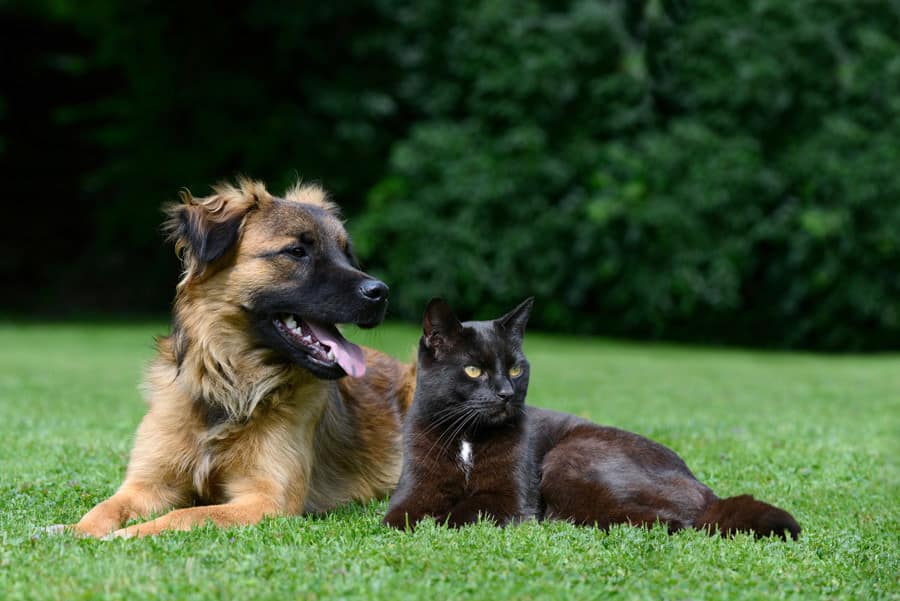
Domestication slowly imposed a different set of conditions that our dogs & cats had to adapt to:
- Reduced exercise
- Concrete and carpet instead of grass and soil
- Fresh air and sunshine has been replaced by polluted environments
- Man selected a new diet for his friend
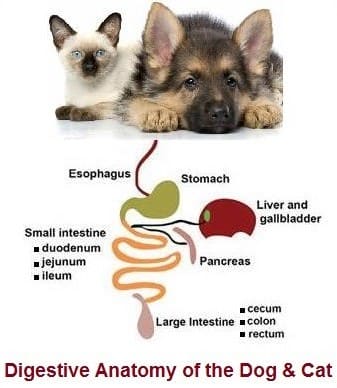
Let’s take a quick look at how well our pets have adapted from a health standpoint. The following are personal observations from many years of pet ownership and 39 years of veterinary medical experience.
Today’s pets have many of the following characteristics that depict a not so smooth adaptation to their new environment and diet:
- Low energy levels
- Overweight and unfit
- Conformational & genetic defects
- Skin & hair coat problems
- Reproductive problems
- Behavioral Problems
- Multiple health problems
When applying well known scientific principles to determine what exactly our pets should be fed, we need to consider the anatomy and physiology of the animal we are feeding.
The percentages below represent the relative capacities of each section of the digestive tract for the three basic classifications of animals.
| Carnivore (dog & cat) | Omnivore | Herbivore | |
|---|---|---|---|
| Stomach | 62.3% | 29.2% | 8.5% |
| Small Intestine | 23.3% | 33.5% | 30.2% |
| Colon | 14.4% | 37.3% | 61.3% |
Very simply, protein for pets is primarily broken down in the stomach; fats and carbohydrate primarily digested in the small intestine and water absorption occurs in the large intestine and colon to allow for fecal formation.
From this, we can predict that the carnivore diet should be balanced accordingly:
- High in Protein
- Low in Fat and Carbohydrate
- Highly concentrated
- Highly digestible
- Low in fiber and other plant residues
Now let’s examine the primary diet of the wolf or lion from whence our dogs & cats evolved:

- Herbivore meat sources (mice to deer) provide approximately 55% protein on a dry matter basis
- Wild Herbivores do not contain excess fat. Healthy animals usually carry up to 14% of their body weight as fat.
- Carbohydrate is only found as glycogen stores in the muscle of herbivores. Stomach contents would contain abundant quantities of carbohydrate; however, biologists that have studied the eating behavior of wolves report that meat, organs, blood and bones are consumed along with stomach linings but the stomach contents go uneaten.
- Meat is highly concentrated in amino acids and other nutrients. It is also easily digested by the extremely high acid content of the carnivore stomach. Meat is also nutrient dense which makes it a perfect fit for the very short and simple digestive tract of the carnivore.
- Fiber and fecal residue are the byproducts of plant matter (carbohydrate) which simply doesn’t work well within the carnivore digestive system.
Example: Man has been eating corn for over 10,000 years. Even with their omnivore anatomy and physiology (better fit to digest and utilize corn) it is not digested well.
Corn is often the primary ingredient in many of our commercial pet foods. One phenomenon I have observed over the years is when corn is fed to a carnivore the amount of corn taken in usually equals the amount of corn going out.
A typical canine commercially prepared diet today can easily be described as:
Low in Protein
Low in Fat
High in Carbohydrate
This raises the question of what is the best food for carnivores. Carnivores have difficulty digesting grains and other complex carbohydrates. With the lack of digestive enzymes in the mouth, complex carbohydrates are not predigested. They take a long time to break down in the stomach, and small intestine, if they break down at all. Most of the complex carbohydrates pass through undigested, and create larger than necessary stool volume.
It is interesting to note that dry pet foods are mainly cereal, consisting of a large part of corn, wheat, rice and soy. While pet food companies would have you believe that grains are a good source of protein for pets, the fact is that our dogs and cats have a difficult time digesting and utilizing protein from carbohydrates. Studies show they do best on animal protein, and the higher the quality, the better the protein is assimilated. The poorer quality protein for pets create a stress on our dog and cats kidneys and makes nutritional digestion difficult.
Dr. David Kronfeld reports that carbohydrates are most important for pets in only two situations: young just coming off their mother’s milk (which is around 12% carbohydrate) and for the lactating bitch and queen, who need three times the usual turnover of blood glucose for production of milk. He goes on to state that “no carbohydrates need be provided in the diet for pups after weaning or adult dogs, not even for those subjected to hard work. The liver is easily able to synthesize sufficient glucose (from amino acids derived from protein and glycerol from fats) for transport in the blood and utilization in other tissues.” He also goes to state that he feels the high carbohydrate content in pet foods is what contributes to coprophagy (stool eating), hypoglycemia and multiple pet disorders.
Cooking animal protein for pets also changes many of the amino acids chains, and makes some of the amino acids pets need unusable or destroys them. Pets’ need for amino acids differ from humans, and meat sources contain the best amino acid profile required for tissue health, immunity and Skin & coat condition.
Lastly, cooking and processing procedure in pet foods creates digestive problems. It can take up to 15 hours to digest processed foods, while fresh foods digest in about 4 to 6 hours. The longer food stays in the system, the greater chance of allergies and digestive upsets.
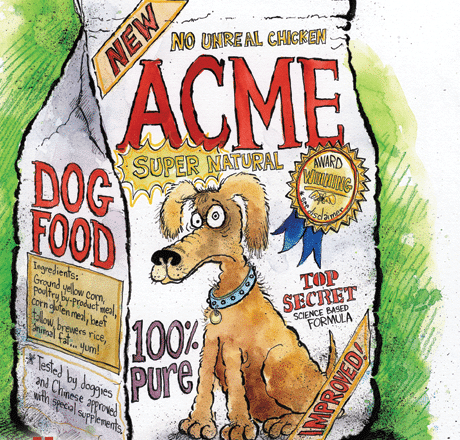
Most of the fat used in processed foods can easily go rancid, and need preservatives to help maintain their integrity. Many of these preservatives have been found to be detrimental to the pet’s health and immune systems, most commonly ethoxoquin, BHA and BHT. These can inhibit the production of white blood cells, lower the immune system and block the absorption of glucose. Also lacking in processed foods are the Omega-3 fatty acids, necessary for good coat and skin health. These fats cannot withstand the long shelf life of processed foods.
Fat is crucial to carnivore nutrition for maintaining and creating energy, and to produce glycerol. While humans require some carbohydrates for energy and endurance, carnivores need fats, both animal and plant source, for creating glucose and developing stamina.
Achieving “Optimum Pet Nutrition”
Here is my recipe for success:
- Recognize that our pets are individuals with many unique and different nutritional needs throughout their lives. In other words, one food cannot meet the varying wellness needs throughout a pet’s entire life.
- Don’t buy into pet food advertising. Learn to read pet food labels so you can actually select a good basic pet diet that fits your pet’s nutritional needs.
- Feed 20% less than most pet foods recommend — daily amounts are set too high and are causing an obesity epidemic. Adjust food quantities by observing your pet and knowing when nutritional needs increase or decrease.
- Use a fully balanced Pet Nutritional Supplement to raise nutrient levels from minimum to optimum and to adjust your pet nutrition needs throughout their entire life.
- Stay away from high calorie, low-quality pet treats.

Most people are aware of the pet health benefits derived from supplementing today’s highly processed foods. Yet, pet food manufactures warn against the use of supplementation. The question is not whether you should add a supplement; but why not, what to use and how much is needed in order to make a difference?
Most supplements today fall into the category of nutritional treats. I have a different theory about supplementation that comes from an understanding of pet health and how nutrients are digested, absorbed and utilized. Common sense dictates that if you are going to take a marginal pet diet and attempt to make it better with a supplement, the supplement must be significantly better than the food. This can only be accomplished if the supplement is totally complete – contains 100% of all essential nutrients; is highly concentrated so a small amount can actually replace a large portion of the pet diet; and, is fully balanced – which facilitates optimum absorption and utilization of all the nutrients being fed.
Nutritional needs change constantly throughout life. Today’s pet diets have fixed protein -calorie ratios, which do not allow for adjustment when needed. Supplementation allows for adjustment — I call it fine tuning the diet to achieve Optimum levels of Wellness.

I have been developing nutritional supplements for the veterinary profession and pets like yours for over 33 years. During that time, I have witnessed both dogs and cats remaining healthier and living longer. Owners of high-performance athletes and show dog enthusiasts have achieved record results using my highly concentrated, complete and balanced nutritional products.
Related Products
-
Canine Behavior Support
$24.99 — or subscribe and save 10% -
Canine Cognitive Support
$44.99 — or subscribe and save 10% -
Canine Complete Joint Care
$79.99 — or subscribe and save 10% -
Canine Digestive Support
$31.99 — or subscribe and save 10% -
Canine Immune Support
$37.99 — or subscribe and save 10% -
Canine Joint Protect
$34.00 — or subscribe and save 10% -

Canine Ultimate Fitness & Health
$37.99 – $69.99 — or subscribe and save 10% -
Canine Optimum Skin & Coat
$34.99 – $63.99 — or subscribe and save 10%


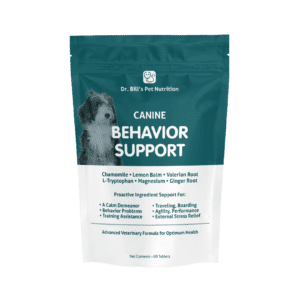
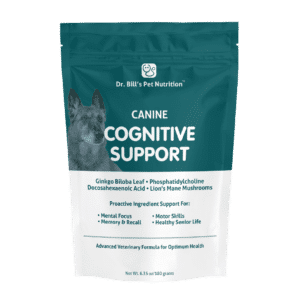




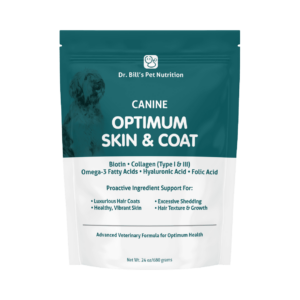
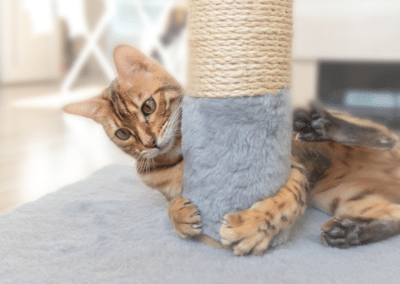

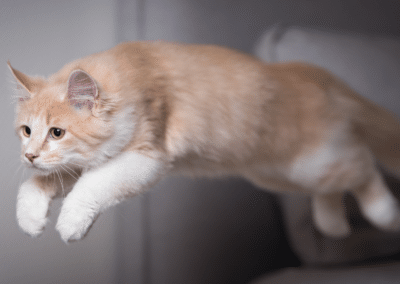

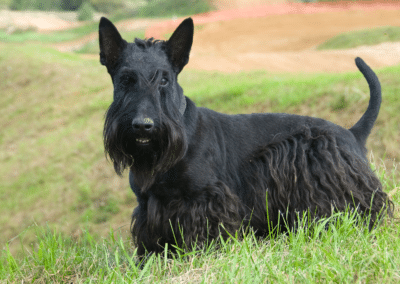

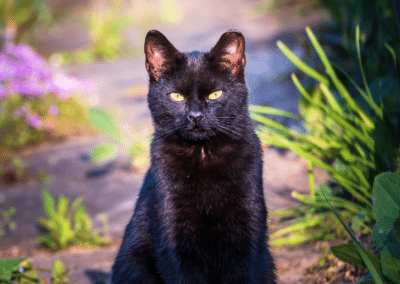
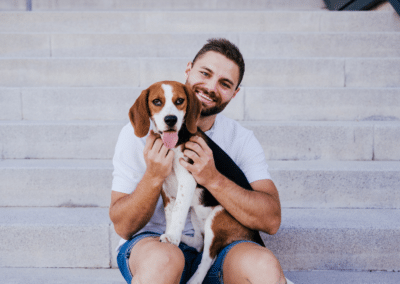
0 Comments